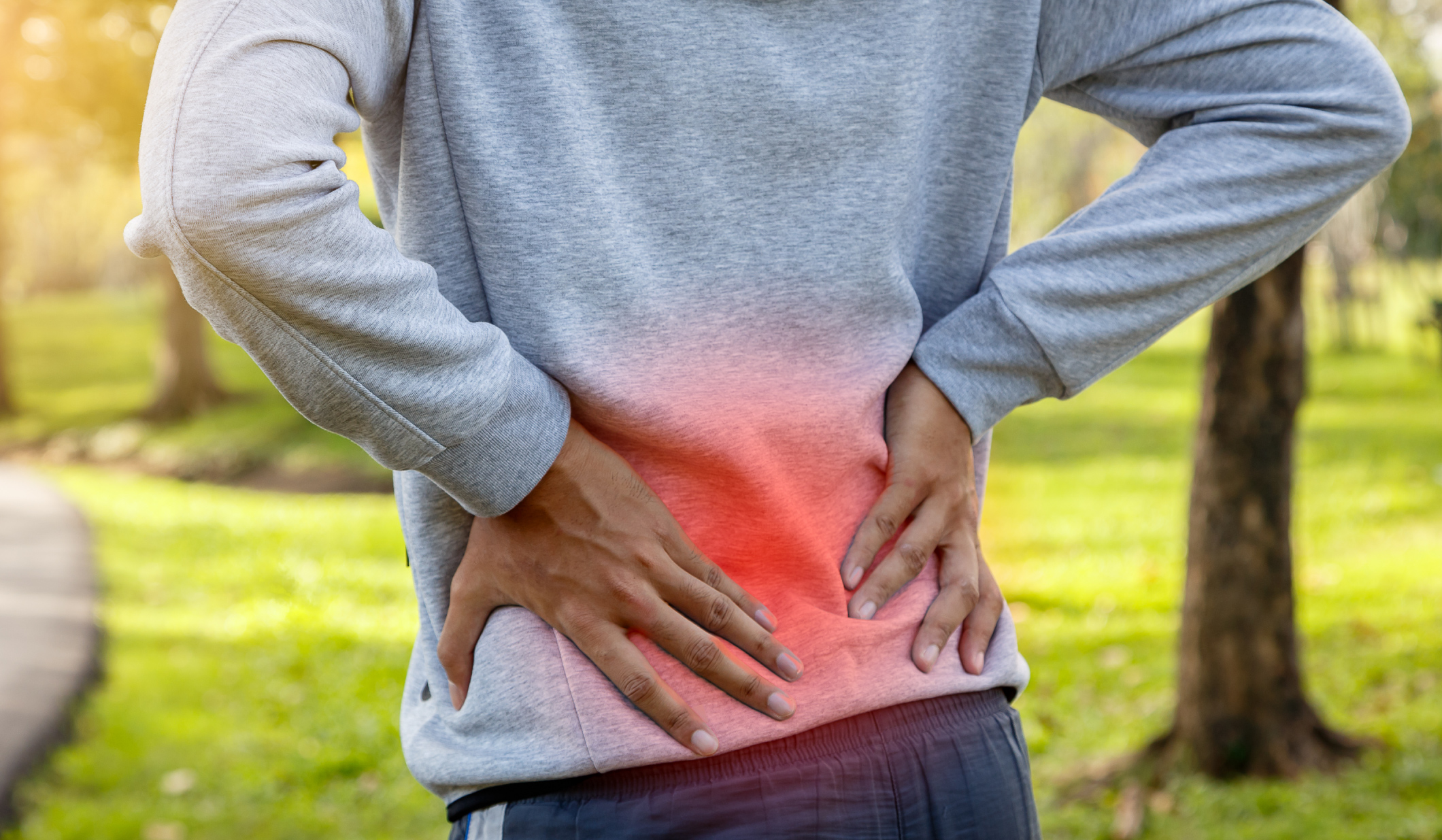Low back pain is the most common thing we deal with in clinic. Over 80% of the population will experience back pain at some point in their life. There are a lot of myths out there regarding the causes of back pain and what to do if you have it. This is a general guide to give you a bit more information about what it is and what to do if you experience it.
Myths around back pain
- ‘It is important to strengthen your core’. Research clearly shows that this is not the case. In fact, people with back pain are more commonly overactive in the muscles around their back.
- ‘Your back is out of alignment and needs to be put back in’. Your back is a very strong and stable structure. Things cannot move out of position and therefore cannot be ‘put back into place’. A manipulation technique that creates a pop is simply a compression of gas within the joint, it’s called a cavitation, and gives temporary pain relief.
- ‘SI Joint or pelvis is out of alignment’. Medical research shows that there is less than 1 degree of movement at your SI joint. It is a heavily bound down structure that literally has no movement. It therefore cannot be out of position and, as such, your pelvis cannot be out of alignment. Pregnant ladies can experience SI joint pain, as a result of a higher level of a hormone called relaxin, which causes their ligaments to be more flexible. This can lead to SI joint pain, we help this with a pelvic belt and with glute strengthening. Relaxin levels return to normal when a lady stops breast feeding their baby.
- ‘Tight hamstrings are affecting your back’. There is no evidence to show that this happens.
- ‘You should be very careful with bending, maintain a straight back at all times if possible when lifting’. Again, not true. Research shows that there is more pressure on your spine if you try to keep it straight when bending and lifting. In fact, the person who holds the world record deadlift of 550kgs does so with a bend in his spine.
So, what do you need to know about back pain?
Classifications
As a physio we classify back pain into different classifications. These are:
- Specific diagnosis – such as a disc problem or nerve root irritation (sciatica)
- Non-specific low back pain – the vast majority of people fit into this category (over 90%), where pain can be caused by any of the tissues in your back such as muscles, ligaments and joints.
- We sub classify people in this category into the direction of movement they experience their pain. Eg a flexion dysfunction is pain with flexion related activities such as bending and sitting.
- There are several sub-classifications, and each has different implications for how we treat it.
A specific pathology such as a disc problem will give severe pain, worse in the morning and with activities like sitting and bending. Pain could be referred into the leg and you may also experience pins & needles or numbness. If you also experience symptoms into both legs at the same time, bladder or bowel control issues, numbness around your back passage and/or loss of control of your foot/ankle you should seek immediate medical attention.
If a nerve from your low back becomes irritated, you may experience pain down the back of the leg which travels past the knee. This may be worse at night in bed. This is what people commonly call sciatica. You might find that traditional painkillers don’t help much. Your GP could prescribe alternative medication (Amitriptyline or Gabapentin) that may give you some relief. There are different things which can irritate the nerve, as physios we are well trained at identifying exactly what it is that is causing the problem.
By far the most common type of back pain is of the non-specific category. This can still involve very acute pain where the muscles go into spasm and you can’t bend. It is very important to try to keep moving as pain allows. If you are very sore then take it easy for 1-2 days and then try to increase your movements. Moving little and often is the best advice we can give. Use heat packs and pain killers. As your pain naturally settles try to move as normally as you can.
How Physio Can Help
We can help in the acute stage to give you advice on the type of back pain you have. Show you the positions and movements most likely to help your type of pain. Hands on treatment can be used to reduce muscle spasm and help your movement and pain. Appropriate exercises for your type of back pain and for each stage of your recovery. We will guide you through your return to normal activities and hobbies, advising when it is appropriate to do so.
This is a guide for general information only. Injuries should be assessed by a qualified specialist such as a physiotherapist or doctor. There are complicating factors that may need to be assessed and addressed.










